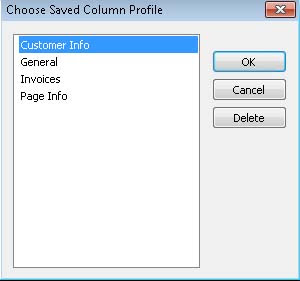
The Virginia Port Authority hired Angela Ellis as its SharePoint Administrator in 2007, but it wasn’t long before her boss, Deputy Executive Director of Administration and CFO Rodney Oliver, enlisted her to start looking into enterprise content management (ECM) solutions.
“Rodney recognized that although SharePoint could do many great things for our organization, records management wasn’t one of them,” says Ellis, who today is a senior web analyst for the Port Authority.
“SharePoint,” she explains, “with all of its many features is so much more robust than a network drive. In particular, the Port Authority uses document workspaces heavily, because they make it easy to collaborate on works in progress such as contracts. However, once you go beyond about 10,000 documents, you’ve got a real mess on your hands.”
According to Ellis, the Port Authority didn’t want to lose the collaboration features inherent in SharePoint, nor did it want to take a familiar interface away from the staff, so it needed to make sure that the Enterprise Content Management solution it selected had a seamless SharePoint integration. “I was the lead on the team that built our RFP,” Ellis says. “In the end, we had more than 400 requirements and 24 vendors vying for our business. The SharePoint integration was our top concern.”
Other important selection criteria included:
- Robust records management functionality.
- The ability to electronically store a wide range of file types, including AutoCAD drawings.
- Open architecture allowing integration with line-of-business applications such as CRM.
- Availability of workflow functionality for process improvements—and a reduced paper flow.
“Before we implemented Laserfiche, our records management plan was very inefficient,” Ellis explains. “We’d print out documents, process them by hand and then file them in cabinets. We had a whole warehouse dedicated to file storage, containing all kinds of old documents in Bankers Boxes stacked nearly to the ceiling that we didn’t have time to properly manage.”
Laserfiche + SharePoint = Transparency
By integrating Laserfiche with SharePoint, the Port Authority now has the ability to collaborate on documents, retain them electronically, and efficiently manage and dispose of digital records—all while giving users access to content through the SharePoint interface.
“Laserfiche has dramatically reduced the flow of paper throughout the organization,” says Ellis. “It’s opened up space for new offices and enabled us to tear down an entire warehouse for profitable use!”
But the cost and space savings aren’t the most significant benefits the Port Authority has realized as a result of its Laserfiche implementation. By acting as integrative middleware, enterprise content solutions allows users at the organization to access information in the environment with which they’re already familiar: SharePoint.
“The Port Authority’s had SharePoint for close to ten years, so people are pretty familiar with it,” says Ellis. “Most of our users won’t even know they’re using Laserfiche. With the integration, our content is searchable on an enterprise level, and the results are returned to users transparently through SharePoint. It enables us to access all our information from one central location without having to train our users on a new system.”
Laserfiche + SharePoint = Operational Efficiency
With Laserfiche in place, the Port Authority has started using it to streamline business processes. First on the list? The RFP and vendor selection process.
The Port Authority was established in 1952 as a political subdivision of the Commonwealth of Virginia for the purpose of stimulating commerce in the ports of the Commonwealth, promoting the shipment of goods and cargoes through the ports, improving the navigable tidal waters within the Commonwealth, and in general to perform any act or function which may be useful in developing, improving or increasing the commerce of the ports of the Commonwealth. As such, it contracts with dozens of vendors each year.
In the past, the RFP and vendor selection process was manual and paper-based:
- Proposals were submitted in hard copy and photocopies for each member of the selection committee.
- After a contract had been finalized, paper copies were made for the Contracts and Finance Departments, and also distributed to the contract administrators.
- Because copies of the contracts documents weren’t centralized, it was difficult to locate the most current version of any given contract or amendment.
With the help of Unity ECM, the Port Authority’s Laserfiche reseller, the organization has transformed the entire process as follows:
- Proposals are submitted electronically and automatically routed into SharePoint.
- Proposals are posted to a workspace in SharePoint for contract evaluation, scoring, changes and selection.
- Once the collaboration phase is finished and the contract is finalized, it is automatically pulled into Laserfiche, where it is retained according to contract retention schedules.
- From SharePoint, users can access the contract by clicking on a URL that takes them directly to the document stored in Laserfiche. The URL placeholder in SharePoint ensures that the data is synchronized between the two systems, simplifying version control.
- When searching for a contract, users run a search in SharePoint that seamlessly provides results from both the Laserfiche and SharePoint repositories.
“Even employees who aren’t technologically inclined appreciate the efficiency of our new process,” says Ellis. “In general, having real-time information available in a central location has been one of the most important process improvements our organization has received as a benefit of this project.”









